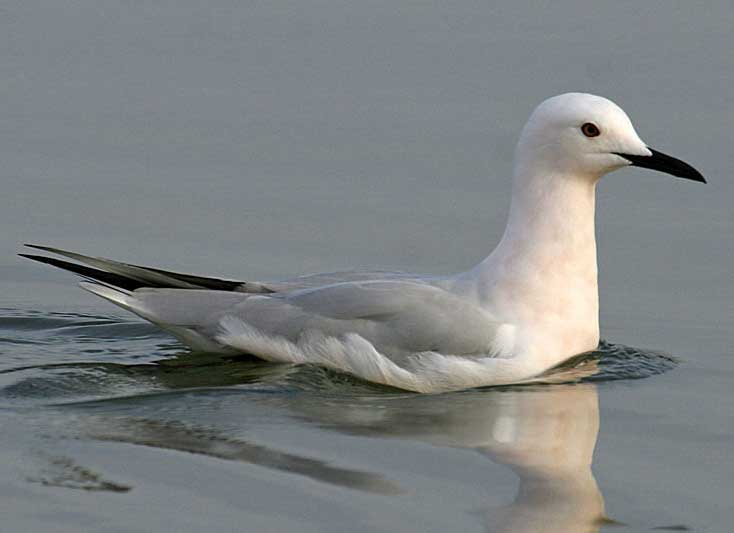Larus genei (*) Cladus: Eukaryota Name Larus genei Breme, 1839 Reference Revue Zoologique, par la Société Cuvierienne 2 p.321 Vernacular names The Slender-billed Gull, Chroicocephalus genei, is a mid-sized gull which breeds very locally around the Mediterranean and the north of the western Indian Ocean (e.g. Pakistan) on islands and coastal lagoons. Most of the population is somewhat migratory, wintering further south to north Africa and India, and a few birds have wandered to western Europe. A stray individual was reportedly seen on Antigua, April 24, 1976 (AOU, 2000). This species is 37–40 cm long with a 90–102 cm wingspan. It is therefore slightly larger than the Black-headed Gull, which it resembles, although it does not have a black hood in summer. The head and dark red bill have an elongated tapering appearance, and this bird also appears long-necked. The legs are dark red, and the iris is yellow. In summer, the breast has a pink colouration. This bird takes two years to reach maturity, as usual in gulls. First year birds have a black terminal tail band, and dark areas in the wings. The scientific name of this bird commemorates the Italian naturalist Giuseppe Gené. This rather uncommon gull breeds in colonies, nesting on the ground and laying up to three eggs. Like most gulls, it is gregarious in winter, both when feeding or in evening roosts. It is not a pelagic species, and is rarely seen at sea far from coasts. It is one of the species to which the Agreement on the Conservation of African-Eurasian Migratory Waterbirds (AEWA) applies. References * American Ornithologists' Union (AOU) (2000): Forty-second supplement to the American Ornithologists' Union Check-list of North American Birds. Auk 117(3): 847–858. DOI: 10.1642/0004-8038(2000)117[0847:FSSTTA]2.0.CO;2 * BirdLife International (2004). Larus genei. 2006. IUCN Red List of Threatened Species. IUCN 2006. www.iucnredlist.org. Retrieved on 11 May 2006. Database entry includes justification for why this species is of least concern * Harrison, Seabirds ISBN 0-7470-8028-8 * Mullarney, Svensson, Zetterstrom and Grant, Collins Bird Guide ISBN 0-00-219728-6 * Pons J.M., Hassanin, A., and Crochet P.A.(2005). Phylogenetic relationships within the Laridae (Charadriiformes: Aves) inferred from mitochondrial markers. Molecular phylogenetics and evolution 37(3):686-699 Source: Wikipedia, Wikispecies: All text is available under the terms of the GNU Free Documentation License |
|

